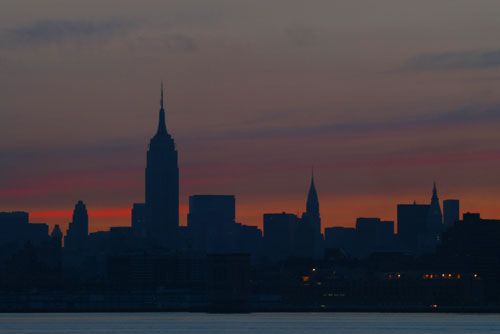The 2003 Blackout Explained: How a Single Failure Shut Down 8 States

What if the world’s most powerful country could be crippled not by war, not by terrorism, but by a single tree touching a wire? That was the uncomfortable truth exposed on August 14, 2003, when the United States and parts of Canada experienced the largest blackout in North American history.
In just minutes, one of the wealthiest, most technologically advanced regions of the world was plunged into darkness. Fifty-five million people across eight U.S. states and Ontario suddenly lost electricity. Trains froze on tracks, water systems collapsed, hospitals scrambled for backup power, and New York City’s dazzling skyline went black.
The cause was almost laughably ordinary, a transmission line sagging into tree branches in Ohio, but the consequences were deadly serious. Roughly 100 people died, billions were lost in economic activity, and public confidence in the reliability of the power grid was shaken to its core.
This was not simply a blackout. It was a revelation: the backbone of modern life could collapse because of one overlooked fault.
A Summer Afternoon that Went Dark
On the afternoon of August 14, 2003, millions of people across the North eastern United States and parts of Canada were enjoying what seemed like an ordinary summer day. Offices hummed with computers, subways were moving, and homes buzzed with the sound of air conditioners fighting off the sticky heat.
At exactly 4:10 p.m. Eastern Daylight Time, that routine was shattered. Lights flickered, computers shut down, trains ground to a halt, and entire skylines went black. Within minutes, the largest blackout in North American history swept across eight U.S. states—New York, New Jersey, Ohio, Michigan, Connecticut, Vermont, Massachusetts, and Pennsylvania—along with the province of Ontario in Canada.

Photo Credit: Pinterest
An estimated 55 million people were suddenly without electricity. The scale of the outage was unprecedented, surpassing earlier blackouts in 1965 and 1977.
What made it especially shocking was not only its vast reach but the fact that it was triggered by something almost absurdly simple: a tree brushing against a sagging power line in Ohio. That single event, magnified by a series of hidden weaknesses in the electrical grid, created a domino effect that left one of the most developed regions of the world in darkness.
The blackout became a defining moment in the history of modern infrastructure. It was not only a story of inconvenience but of vulnerability, resilience, and the lessons that come when human error and technological fragility collide.
The Chain of Failures that Sparked the Collapse
While it might sound unbelievable, the origins of the 2003 blackout can be traced to FirstEnergy Corporation, a utility company in Ohio. On that fateful afternoon, one of its high-voltage transmission lines sagged under heavy electrical load and brushed against an untrimmed tree. Under normal circumstances, the fault would have been manageable. The line should have tripped and alerted operators, who could have rerouted power to keep the system stable. But that day was far from normal.
Photo Credit: Google
A software bug in FirstEnergy’s control room alarm system prevented operators from receiving critical alerts. The system, instead of updating quickly, slowed to a crawl. Operators did not realize multiple transmission lines were failing one after another. From 3:05 p.m. to 3:45 p.m., three major lines in Ohio disconnected from the grid. Power flows, normally balanced across a vast interconnected system, began to surge unpredictably from one region to another.
As electricity sought new paths, lines became overloaded, and automatic protective relays began shutting them down to prevent damage. Each disconnection increased stress on the remaining lines, forcing them to trip as well. The grid, a finely tuned network that relies on constant balance, began to split into fragments. By the time the operators understood what was happening, it was too late.
Between 4:10 p.m. and 4:13 p.m., the grid in the northeast collapsed in a matter of seconds. Entire states lost power almost simultaneously. What began with a tree in Ohio rippled into a catastrophe affecting millions across the U.S. and Canada.
Investigations later revealed multiple causes beyond the tree and the software bug. There was poor vegetation management, meaning trees near lines had not been trimmed adequately. There was insufficient operator training to recognize and respond to cascading failures.
And there was a lack of real-time communication between utilities across state and national borders. In a system designed to share both power and responsibility, these weaknesses amplified one another until the grid could no longer hold.
Life in Darkness: The Human Cost of the Blackout
When the power snapped off, life in one of the most urbanized regions in the world changed instantly. In New York City, subway trains screeched to a stop between stations, leaving thousands trapped underground. Commuters poured out of darkened office towers and walked across bridges in the evening heat. Elevators froze between floors, and traffic lights went dark, causing chaos on the streets.
Hospitals relied on backup generators, but even those sometimes faltered. In Detroit, 4 million water customers were put under boil-water advisories because pumping stations had failed. Gas stations could not operate pumps, so cars ran out of fuel. Restaurants, unable to refrigerate food, shut their doors.
The blackout was not only inconvenient but deadly. Roughly 100 deaths were linked to the outage. Some came from carbon monoxide poisoning, as people used generators or charcoal grills indoors. Others were caused by fires from candles, accidents on darkened streets, or medical emergencies where equipment failed. In New York, the fire department fielded over 80,000 emergency calls, including more than 60 major fires.
In Toronto, Canada’s largest city, the skyline went black, and thousands of people spilled into the streets. Public transportation froze, and residents carried groceries home on foot. Some rural areas of Ontario and Michigan remained powerless for up to four days, though most urban centers restored electricity within 24 to 30 hours.
Despite the chaos, stories of resilience emerged. Neighbors helped one another with food, water, and candles. Strangers directed traffic at intersections or handed out drinks to weary commuters walking home.

Photo Credit: Pinterest
Without televisions, air conditioning, or computers, many people sat outside and talked to one another, rediscovering a slower pace of life that the modern grid usually made impossible. The blackout revealed both how fragile modern society can be and how communities can adapt when technology fails.

Photo credit: Pinterest
Investigations, Reforms, and Lessons Learned
In the weeks that followed, the question on everyone’s mind was simple: How could this happen? A joint U.S.–Canada task force launched a detailed investigation. By April 2004, the findings were clear. The blackout was not a single freak accident but the result of systemic weaknesses. Poor vegetation management, outdated software systems, and a lack of mandatory reliability standards all played critical roles.
Until then, grid reliability in the United States was governed by voluntary guidelines issued by the North American Electric Reliability Council (NERC). Utilities were expected to follow them, but there was no legal enforcement. After the blackout, that changed. The U.S. and Canada moved to establish mandatory reliability standards, requiring utilities to properly maintain lines, train operators, and coordinate across regions.
New technological improvements were introduced as well. Real-time monitoring tools, automated alarms, and better communication protocols were developed to prevent operators from being blindsided.
Utilities invested in protective equipment designed to isolate local failures before they could cascade across entire states. The event also pushed governments to recognize the fragility of aging electrical infrastructure and the need for modernization.
The blackout became a case study in cascading failures, often cited in engineering, disaster management, and policy circles. It demonstrated how interconnected systems, while efficient, are also vulnerable. A small oversight in Ohio could, in minutes, darken Times Square and strand Toronto commuters.
Why the 2003 Blackout Still Matters
More than two decades later, the 2003 Northeast Blackout remains one of the most important reminders of the vulnerability of modern infrastructure. The world has grown even more dependent on electricity since then. Today, with the rise of digital technology, electric vehicles, and renewable energy integration, the grid carries more responsibility than ever.
The lessons of 2003 are not confined to history. Climate change brings more extreme weather that stresses power lines. Cybersecurity threats pose new risks that did not exist at the same scale in 2003. Urban populations are larger, and outages now have even greater consequences for health, safety, and economic stability.
The event also reshaped how people think about resilience. It showed that while infrastructure can fail, communities can step in to support one another. It highlighted the importance of backup systems, emergency planning, and redundancy in public services.
The blackout of 2003 was not just about eight states and Ontario losing power. It was a warning. It reminded society that even the most advanced systems can fail because of human oversight, natural limits, or technological flaws. And it underlined that safeguarding infrastructure is not a one-time project but a continuous responsibility.
More Articles from this Publisher
Nigeria Secures West Africa’s Biggest Military Jet Acquisition with 24 Italian M-346FA Fighters

Nigeria makes history with West Africa’s largest military jet deal, acquiring 24 Italian M-346FA fighters to modernize i...
How to Keep Your Wig Safe from Snatchers This December

A humorous yet practical guide for Lagos women navigating Detty December. Learn how to protect your wig, embrace natural...
Queen Of Talk Show: What Is Next For Morayo Afolabi Brown?

After 12 years shaping Nigeria’s talk TV, Morayo Afolabi Brown isn’t just back; she’s creating her own stage. The Morayo...
Five Menstruation Myths That Still Need to Go

Why do menstruation myths survive in a world of modern medicine? We examine five beliefs science has already debunked.
ITU Reports That 2.2 Billion People are Offline, So How “Global” Is Your Feed Really?

Your feed feels “global” until you realize who isn’t in it. In just 10 countries, about 1.25 billion people are offline,...
The Population Plot Twist: What Really Changed in OECD Countries Since 1990?

Migration quietly rewired many OECD countries in 35 years. Who benefited, who paid the price, and why the backlash keeps...
You may also like...
Arsenal Legend Thierry Henry to Receive Prestigious BBC Lifetime Achievement Award

Former Arsenal and France football legend Thierry Henry will be honored with the Lifetime Achievement award at the 2025 ...
Maresca's Emotional Rollercoaster: Chelsea Boss Claims 'Happy' After 'Worst 48 Hours'

Chelsea boss Enzo Maresca has clarified his previous 'worst 48 hours' comments, now expressing happiness and a deeper co...
Fallout Season 2 Shatters Records, Outperforming HBO's Last of Us!

Fallout Season 2 has premiered on Prime Video to overwhelmingly positive critical and audience reception, scoring a near...
Winter Is Back! Kit Harington Hints at Massive Game of Thrones Comeback

Kit Harington has definitively shut down any possibility of reprising his role as Jon Snow, stating he doesn't want to g...
Love Blossoms: Anwuli & Kennedy's Instagram Romance Leads to #HappilyEverOffor!

Anwuli and Kennedy's love story, sparked by an Instagram connection, led to a beautiful Igbo traditional wedding. After ...
Teyana Taylor & Lucien Laviscount Light Up the 'Spirit Tunnel' with Epic Dance Moves!

The Jennifer Hudson Show features high-energy 'Spirit Tunnel' entrances, with Lucien Laviscount making a stylish walk an...
Kenya's Billion-Shilling Travel Bill: Austerity Pledge Broken?

The Kenyan government spent nearly Sh5 billion on travel in the first three months of FY 2025/26, raising concerns about...
Shehu Sani Urges Nigerians: Shun US Travel Ban, Build Nation

The United States has enacted new travel restrictions impacting Nigerian nationals, covering both immigrant and several ...
